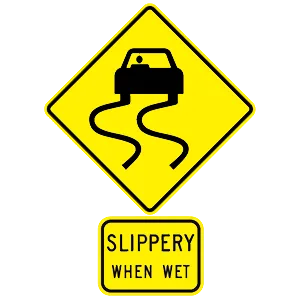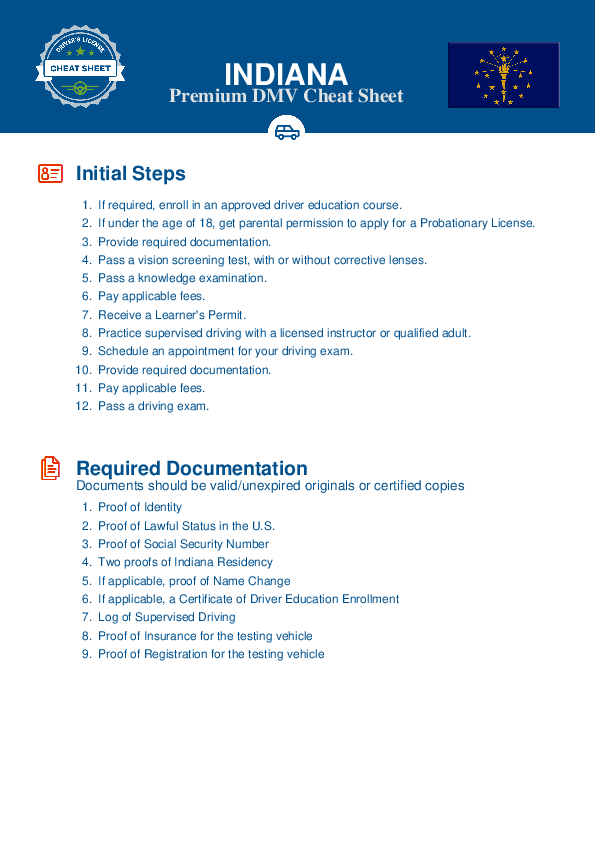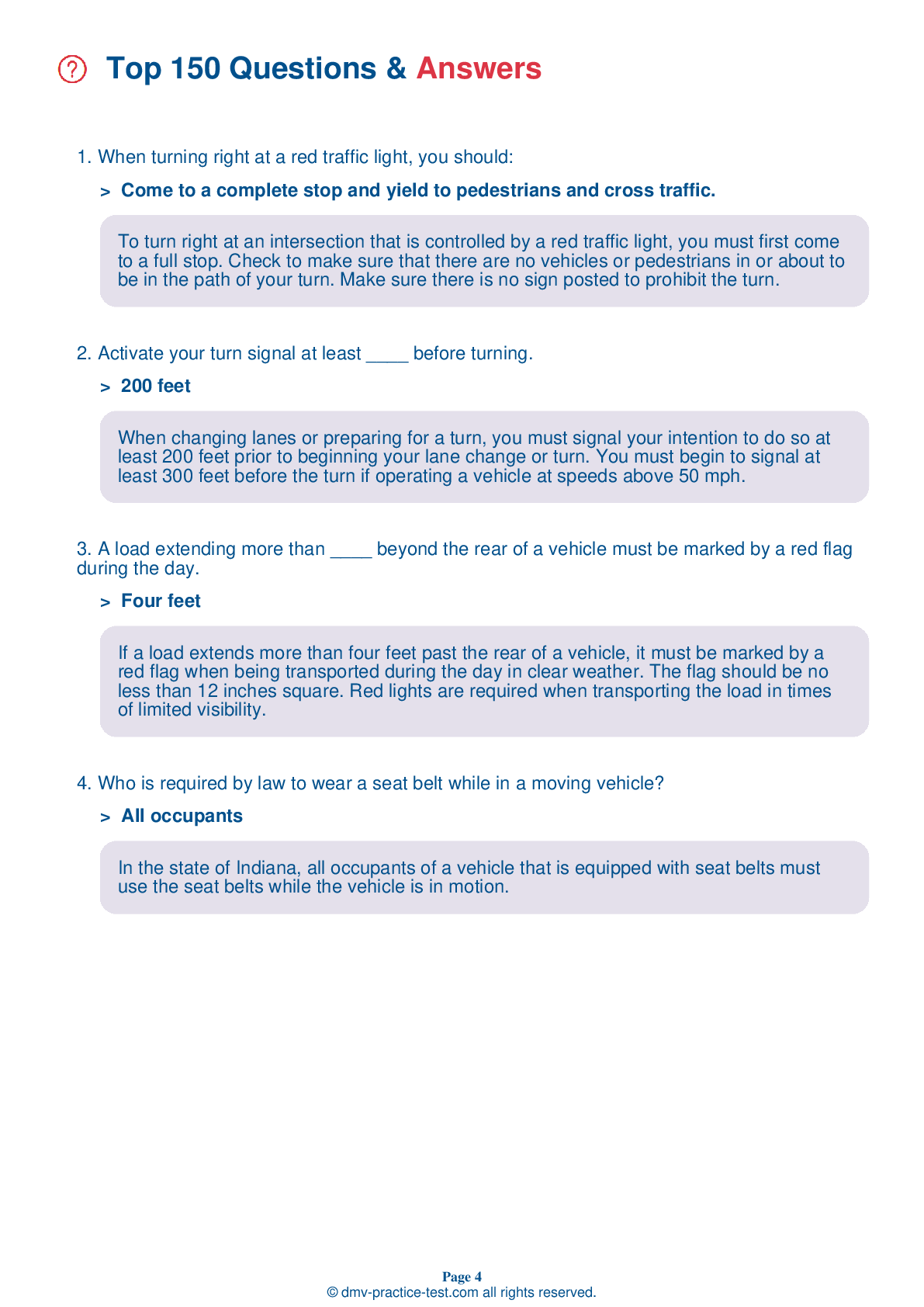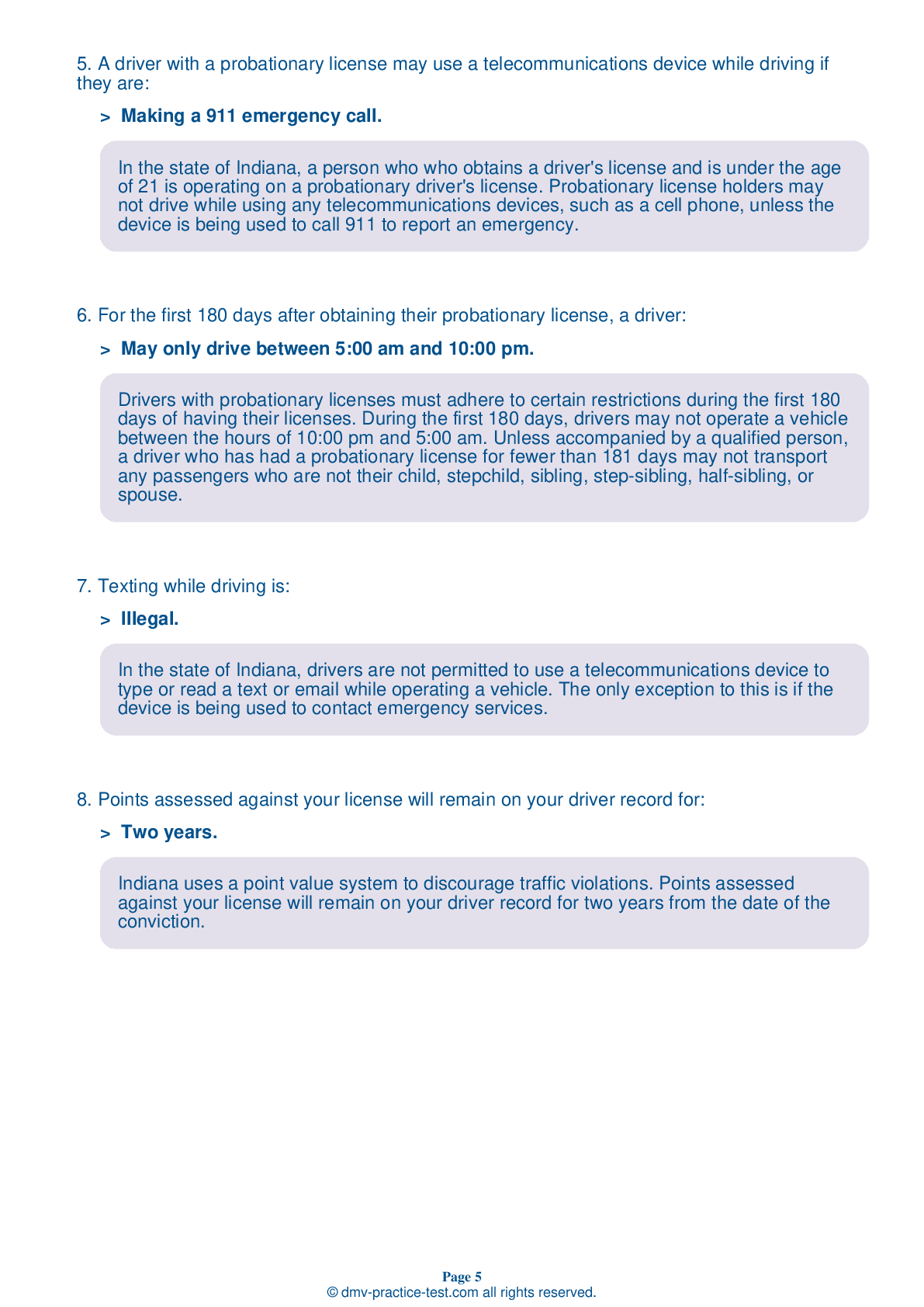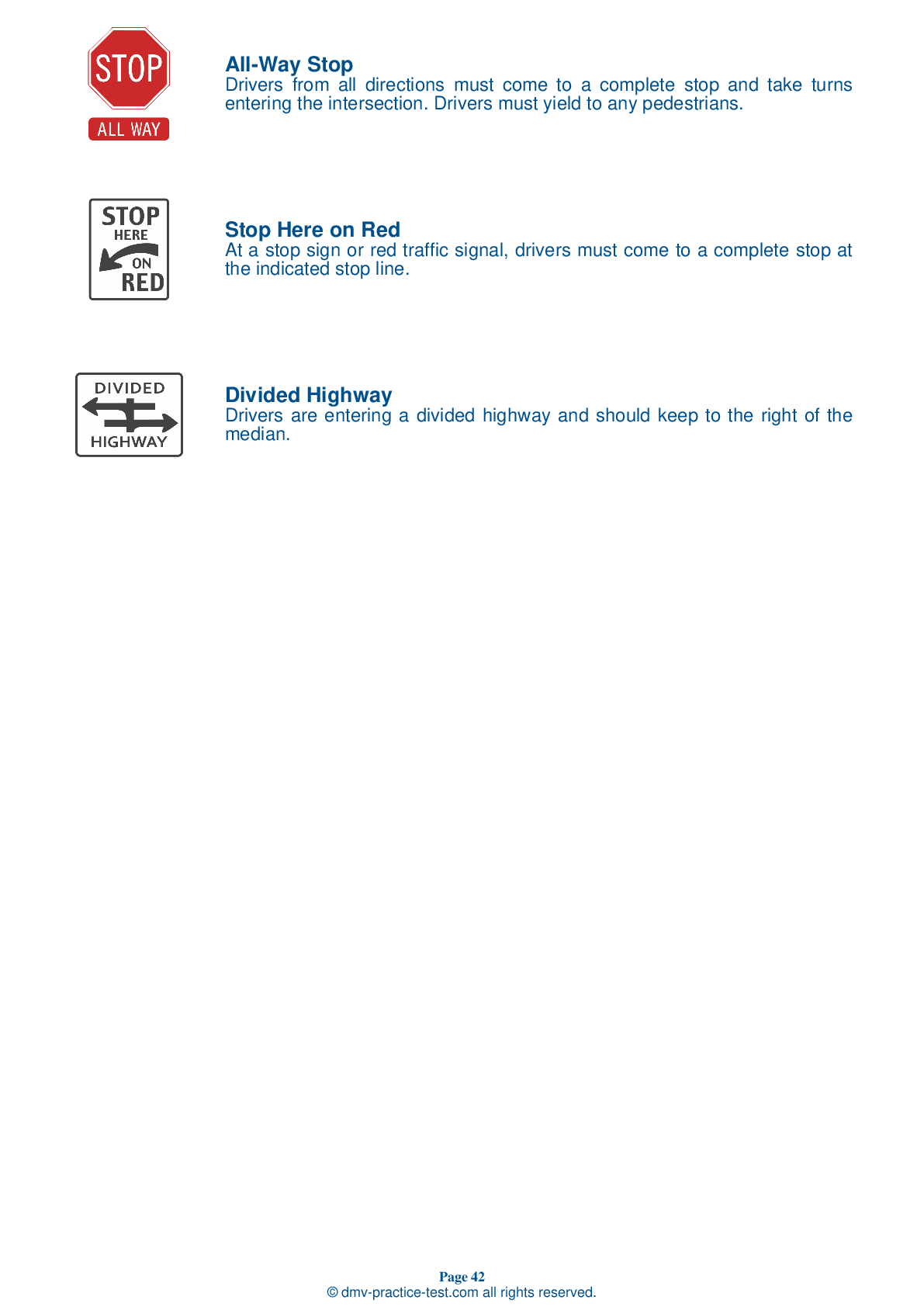FREE Indiana DMV Practice Test #5 Page 2 of 5
This set of Indiana DMV practise tests has been updated for January 2025. It includes questions based on the Indiana Driver Handbook's most significant traffic signals and laws for 2025. Use actual questions that are very similar (often identical!) to the DMV driving permit test and driver's licence exam to study for the DMV driving permit test and driver's licence exam.
On the practise exam, each question gets a tip and explanation to help you remember the concepts. The written component of the official Indiana DMV test will include questions about traffic rules, traffic signs, and driving statutes, as well as information from the Driver Handbook.
To obtain a passing grade, you must correctly answer 44 of the 50 questions. Take our DMV practise exam to help you prepare for your Indiana instruction permit or driver's licence.
The DMV exam is available in several languages.
Using any kind of testing assistance will result in an automatic fail, and the DMV may take additional action against your driver's licence, so stay away from it.
9 . Smoking and preparing to smoke while driving:
Smoking while driving can create dangerous distractions by causing you to take your hands off the wheel and/or your eyes off the road.
10 . On a two-lane street, your vehicle is being followed by a fire engine that is not using its emergency signals. You should:
If you are being followed by an emergency vehicle that is not using its siren or flashing lights, you do not need to clear a path. Continue driving in a normal manner.
11 . Stop lines are solid white lines painted across traffic lanes:
Stop lines are solid white lines painted across traffic lanes at intersections and pedestrian crosswalks. They indicate the exact location at which approaching drivers must stop.
12 . An approaching driver fails to dim their high beam headlights. Where should you look?
If an approaching driver fails to dim their high beams, glance toward the right side of the road. This will keep you from being blinded by the other vehicle’s headlights and will allow you to see enough of the road to stay on course until the other vehicle has passed.
13 . What may help drivers conserve gasoline?
Every time you have to stop quickly, it takes time and fuel to accelerate and get your vehicle back up to the speed of traffic. Drivers who look far ahead of their vehicles can slow down gradually or change lanes to avoid unnecessary braking, leading to better gas mileage.
14 . Pentagonal signs indicate:
Pentagonal signs indicate that you are in a school zone. Be extra alert to children and pedestrians when driving near a school.
15 . This sign means:
